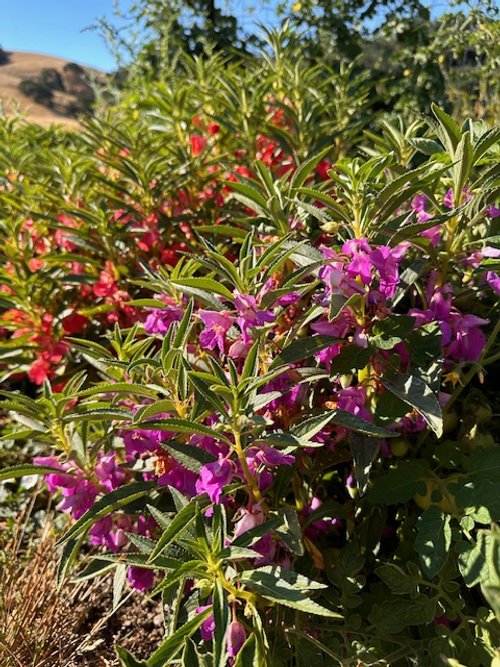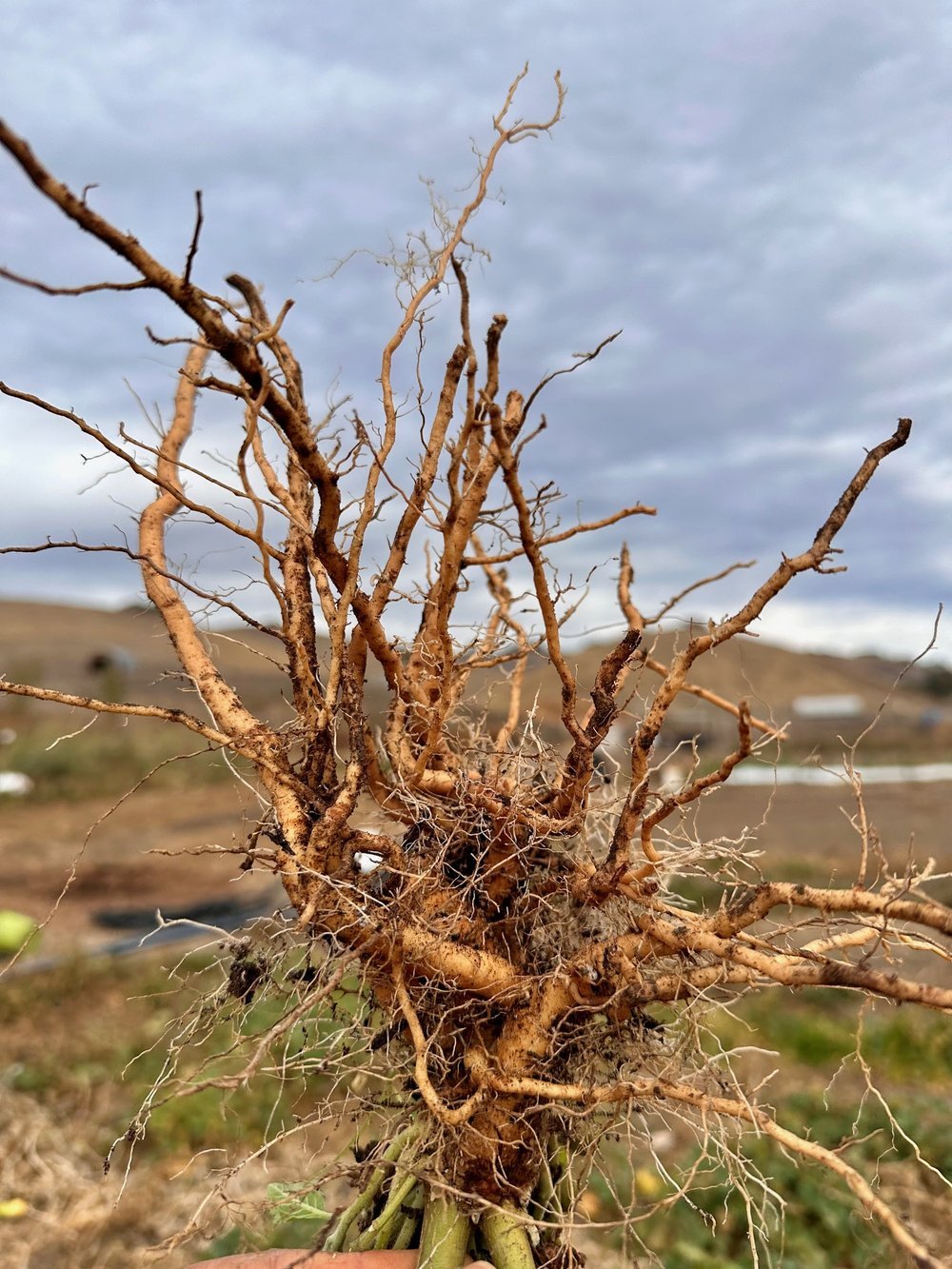 Image 1 of 6
Image 1 of 6

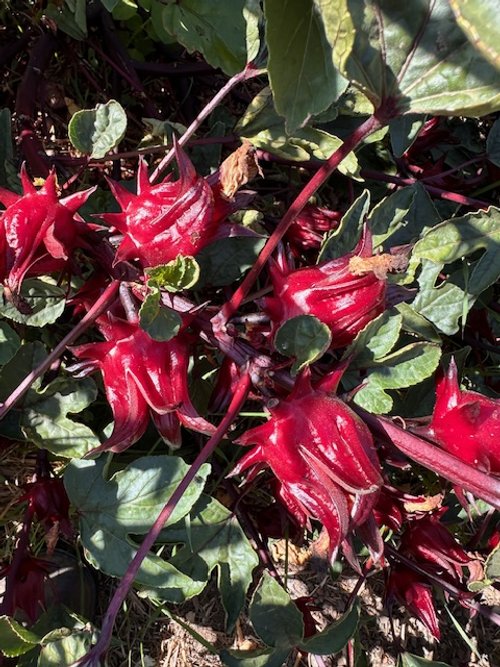 Image 2 of 6
Image 2 of 6

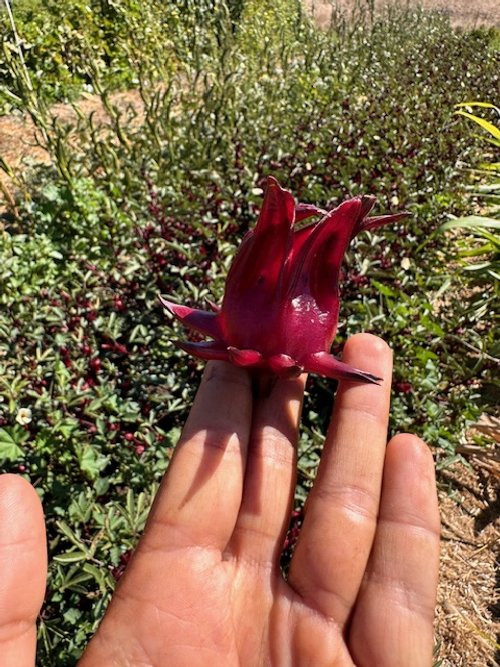 Image 3 of 6
Image 3 of 6

 Image 4 of 6
Image 4 of 6

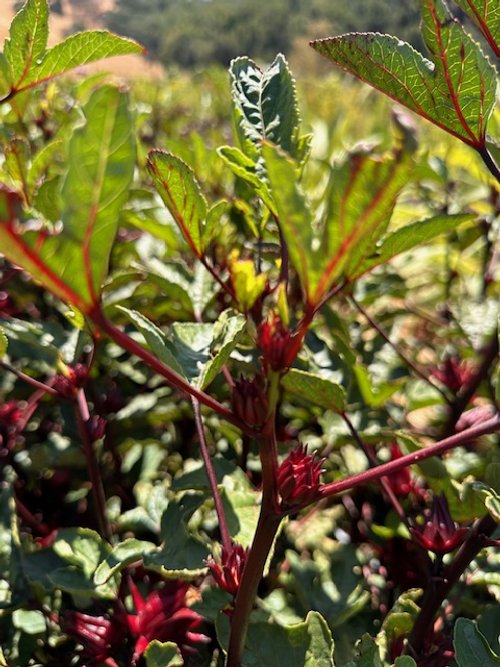 Image 5 of 6
Image 5 of 6

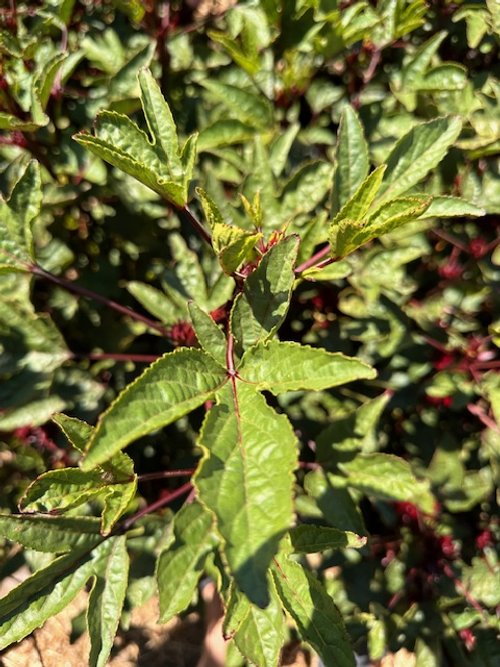 Image 6 of 6
Image 6 of 6







Hibiscus (Gongura) Seeds
Also, known as gongura, ambada bhaji, roselle and sour leaf, this leafy green is sour and adds a great tangy touch to meat or vegetable dishes. The leaves are also used in pickles or fresh in salads. A typical way to prepare the sour leaves, or Gongura, in Southern India is to make a chutney.
Produces stunning red flowers that can be harvsted and dried for tea or drinks such as jamaica. If harvesting for tea, harvest when flowers have fallen off and the red cone-like calyxes remains. Calyxes can also be used for dye.
Plants can grow up to 5 feet tall, although in our climate they only reach around 3 feet. Produces plenty of flowers by late-summer. Flowers are edible.
This is our second year growing and saving seeds for this variety. The seeds are originally from India but we’ve found that they have already adapted well to our more temperate (and much colder) climate.
20 seeds per packet.
Hibiscus sabdariffa
Also, known as gongura, ambada bhaji, roselle and sour leaf, this leafy green is sour and adds a great tangy touch to meat or vegetable dishes. The leaves are also used in pickles or fresh in salads. A typical way to prepare the sour leaves, or Gongura, in Southern India is to make a chutney.
Produces stunning red flowers that can be harvsted and dried for tea or drinks such as jamaica. If harvesting for tea, harvest when flowers have fallen off and the red cone-like calyxes remains. Calyxes can also be used for dye.
Plants can grow up to 5 feet tall, although in our climate they only reach around 3 feet. Produces plenty of flowers by late-summer. Flowers are edible.
This is our second year growing and saving seeds for this variety. The seeds are originally from India but we’ve found that they have already adapted well to our more temperate (and much colder) climate.
20 seeds per packet.
Hibiscus sabdariffa
Also, known as gongura, ambada bhaji, roselle and sour leaf, this leafy green is sour and adds a great tangy touch to meat or vegetable dishes. The leaves are also used in pickles or fresh in salads. A typical way to prepare the sour leaves, or Gongura, in Southern India is to make a chutney.
Produces stunning red flowers that can be harvsted and dried for tea or drinks such as jamaica. If harvesting for tea, harvest when flowers have fallen off and the red cone-like calyxes remains. Calyxes can also be used for dye.
Plants can grow up to 5 feet tall, although in our climate they only reach around 3 feet. Produces plenty of flowers by late-summer. Flowers are edible.
This is our second year growing and saving seeds for this variety. The seeds are originally from India but we’ve found that they have already adapted well to our more temperate (and much colder) climate.
20 seeds per packet.
Hibiscus sabdariffa
